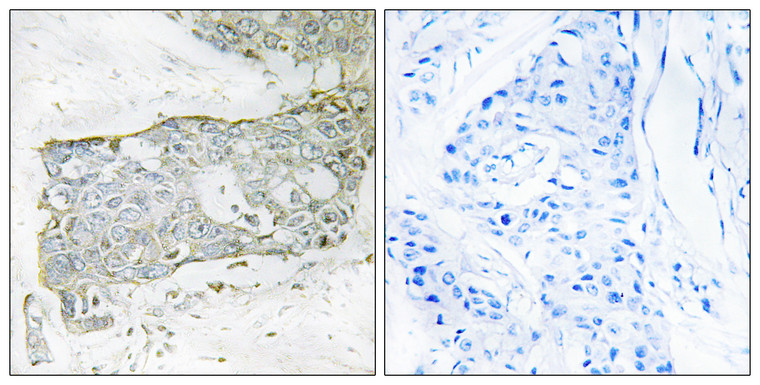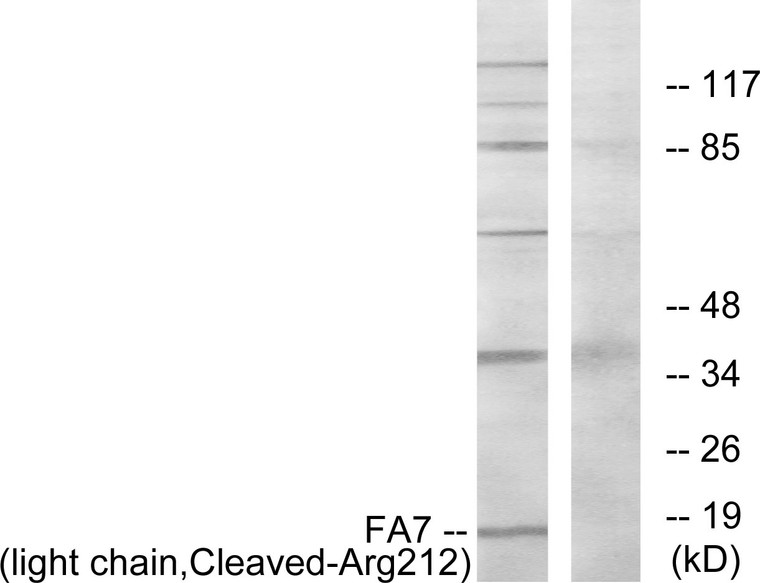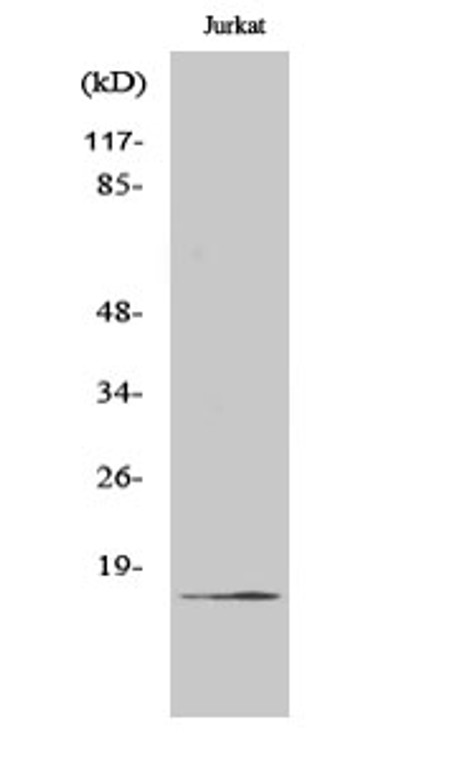| Host: |
Rabbit |
| Applications: |
WB/IHC/IF/ELISA |
| Reactivity: |
Human/Rat/Mouse |
| Note: |
STRICTLY FOR FURTHER SCIENTIFIC RESEARCH USE ONLY (RUO). MUST NOT TO BE USED IN DIAGNOSTIC OR THERAPEUTIC APPLICATIONS. |
| Short Description: |
Rabbit polyclonal antibody anti-Cleaved-Coagulation factor VII-R212 (171-220 aa) is suitable for use in Western Blot, Immunohistochemistry, Immunofluorescence and ELISA research applications. |
| Clonality: |
Polyclonal |
| Conjugation: |
Unconjugated |
| Isotype: |
IgG |
| Formulation: |
Liquid in PBS containing 50% Glycerol, 0.5% BSA and 0.02% Sodium Azide. |
| Purification: |
The antibody was affinity-purified from rabbit antiserum by affinity-chromatography using epitope-specific immunogen. |
| Concentration: |
1 mg/mL |
| Dilution Range: |
WB 1:500-1:2000IHC 1:100-1:300ELISA 1:20000IF 1:50-200 |
| Storage Instruction: |
Store at-20°C for up to 1 year from the date of receipt, and avoid repeat freeze-thaw cycles. |
| Gene Symbol: |
F7 |
| Gene ID: |
2155 |
| Uniprot ID: |
FA7_HUMAN |
| Immunogen Region: |
171-220 aa |
| Specificity: |
Cleaved-Factor VII LC (R212) Polyclonal Antibody detects endogenous levels of fragment of activated Factor VII LC protein resulting from cleavage adjacent to R212. |
| Immunogen: |
The antiserum was produced against synthesized peptide derived from the human FA7 at the amino acid range 171-220 |
| Post Translational Modifications | The vitamin K-dependent, enzymatic carboxylation of some glutamate residues allows the modified protein to bind calcium. The iron and 2-oxoglutarate dependent 3-hydroxylation of aspartate and asparagine is (R) stereospecific within EGF domains. O- and N-glycosylated. N-glycosylation at Asn-205 occurs cotranslationally and is mediated by STT3A-containing complexes, while glycosylation at Asn-382 is post-translational and is mediated STT3B-containing complexes before folding. O-fucosylated by POFUT1 on a conserved serine or threonine residue found in the consensus sequence C2-X(4,5)-S/T-C3 of EGF domains, where C2 and C3 are the second and third conserved cysteines. Can be either O-glucosylated or O-xylosylated at Ser-112 by POGLUT1 in vitro. |
| Function | Initiates the extrinsic pathway of blood coagulation. Serine protease that circulates in the blood in a zymogen form. Factor VII is converted to factor VIIa by factor Xa, factor XIIa, factor IXa, or thrombin by minor proteolysis. In the presence of tissue factor and calcium ions, factor VIIa then converts factor X to factor Xa by limited proteolysis. Factor VIIa will also convert factor IX to factor IXa in the presence of tissue factor and calcium. |
| Protein Name | Coagulation Factor ViiProconvertinSerum Prothrombin Conversion AcceleratorSpcaEptacog Alfa Cleaved Into - Factor Vii Light Chain - Factor Vii Heavy Chain |
| Database Links | Reactome: R-HSA-1368108Reactome: R-HSA-140834Reactome: R-HSA-159740Reactome: R-HSA-159763Reactome: R-HSA-159782 |
| Cellular Localisation | Secreted |
| Alternative Antibody Names | Anti-Coagulation Factor Vii antibodyAnti-Proconvertin antibodyAnti-Serum Prothrombin Conversion Accelerator antibodyAnti-Spca antibodyAnti-Eptacog Alfa Cleaved Into - Factor Vii Light Chain - Factor Vii Heavy Chain antibodyAnti-F7 antibody |
Information sourced from Uniprot.org
12 months for antibodies. 6 months for ELISA Kits. Please see website T&Cs for further guidance









